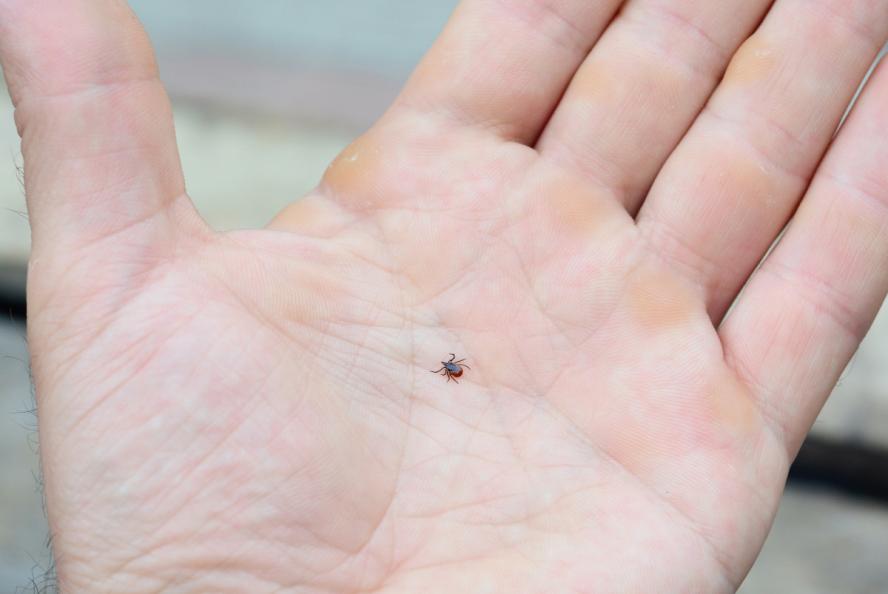-
About
- Leadership & Faculty
- News & Events
-
Academics
- Graduate
- Advanced Clinical Training
- Continuing Education
- Academic Offices
-
Student Life
-
Research
-
Hospitals & Clinics
- Emergency Care
- Hospital Services
-
Community Outreach
- Volunteer
Tick Talk: Facts and Fiction
Ask the experts

According to one theory, since most of New England did not experience a deep freeze this winter, that means we’ll see more ticks this year, right?
Cummings School of Veterinary Medicine recently posed this question to a pair of its experts in the study of ticks, and asked them to share any additional advice or information.
“I haven’t seen an increase in tick-borne diseases this winter due to the warmer weather. Will we see more this year than last year? It’s a guess,” says Dr. Michael Stone, an associate clinical professor in the Department of Clinical Sciences. Tick-borne diseases of dogs are among his areas of research expertise.
“For my clients I strongly recommend tick preventatives for their dogs during the spring/summer/fall months. If the weather is warm, consider year-round preventatives.
Based on my experience, I’ve realized that providing an accurate tick forecast is nearly impossible.
Dr. Sam Telford
Professor Department of Infectious Disease and Global Health
“We can’t predict which years will be worse, but ticks are present at some level every year, and dogs can get ill from one tick bite. Some tick-borne diseases could be fatal.”
Dr. Sam Telford III, a professor in the Department of Infectious Disease and Global Health, has been studying ticks for more than three decades.
Telford shares, “Weather is an important variable in regulating tick abundance and distribution. That said, published analyses have not come up with firm predictors of tick infestations of people or companion animals … lots of theoretical work, but very little empirical evidence.
“Theoretically, dryness kills and subzero temperature kills. Last summer, I was completely stymied in collecting nymphal deer ticks in Central Massachusetts because it was so dry. There were no ticks whatsoever. Furthermore, their numbers were down by 30 to 40 percent on the Islands, and the cases of Lyme disease reported by the Massachusetts Department of Public Health had also decreased by 30 percent.
“Because the nymphal deer ticks feeding in May–July turn into the adult deer ticks that come out in October, I predicted that I would also get none of them in the fall. Completely wrong. More adult deer ticks than the years before. Where did they come from? Is it because they hid from my sampling in June? Maybe they were only out at night because it was too dry during the day. Is it because they are like cicadas and have multiple hidden dormant broods that emerge when times are tough?
“Subzero temperatures when there is no snow cover should kill adult deer ticks. The warm wet winter we had could have three different effects. (1) fewer ticks when it really warms up in the spring because the ticks from the fall could be finding hosts (deer) all through the winter, leaving fewer around for me to find in the spring; typically the cold weather stops them from finding hosts and they have to wait until it is warmer. (2) But...there could be more ticks because extreme cold did not kill them. (3) Or maybe, because it was so wet, ticks got infected by fungus and died, so, fewer ticks.
“Based on my experience, I’ve realized that providing an accurate tick forecast is nearly impossible. I suspect it is because ticks are far more clever than we are and there are still basic aspects of the life cycle that remain undiscovered. This is why I am highly skeptical about all the hand waving on climate change and how we will have ‘Tick Armageddon.’ It could be that we will have the ‘Great Decline’ of ticks. We just don’t know enough. This is why I still work on ticks after having spent 35 years studying them.”
I found a tick!
If you get a tick, here are some tips for successfully removing it.
First, gather supplies. You will need gloves, tweezers or commercial tick remover, antiseptic and rubbing alcohol.
Second, remove the tick. If using tweezers, grasp the tick as close to your animal's skin as possible. Pull outward in a straight, steady motion. If using commercial tick removers, Gently press the remover against your animal’s skin near the tick and slide the remover under the tick until pulled free.
Third, clean the area. Clean the tick bite with antiseptic, disinfect the tweezers/tick remover with rubbing alcohol
And finally, watch bite size for irritation or infection. If either develops, contact your veterinarian.
Department:
Dept. of Infectious Disease and Global Health
